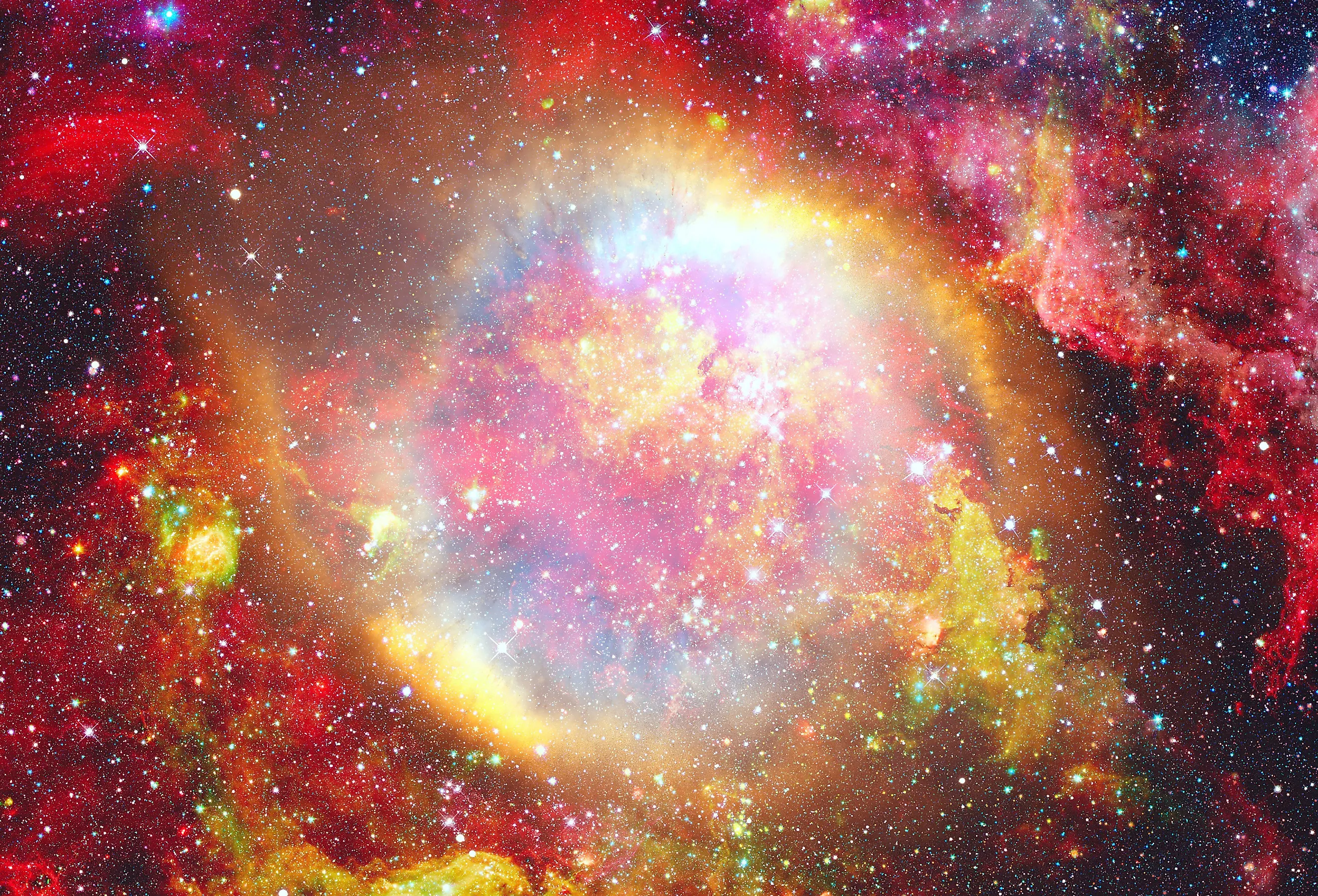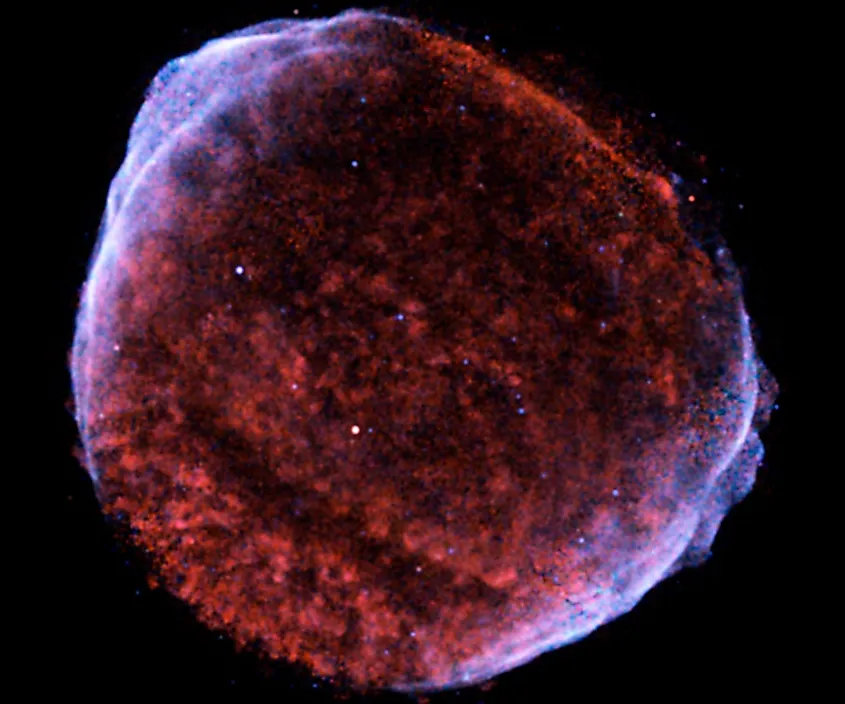
The Brightest Supernova in the Universe
A supernova represents the final moments of a massive star’s life. For stars that are at least eight times the mass of the sun, their fate ends in a supernova. A supernova occurs when a massive star runs out of fuel. Stars are powered through nuclear fusion reactions, wherein hydrogen nuclei fuse together, and in the process, produce energy. While stars contain vast amounts of hydrogen fuel, it is still only a finite amount. Eventually, it runs out, and when it does, the outward flow of a star’s energy can no longer counteract the inward pull of a star’s gravity.
The fusion process will continue down the periodic table, with the types of elements produced dependent upon the mass of a star. Stars that end in supernovae, continue the fusion process until producing iron in their cores. Unlike all the elements prior, the fusion of iron absorbs more energy than it releases. Once iron forms within a star’s core, its fate is sealed.
The star collapses inwards, and pressures within the core skyrocket to such a degree that individual atoms are squeezed together. Protons and electrons collide and become neutrons, and eventually, the core's composition is almost entirely of neutrons, becoming an ultra-dense object known as a neutron star. The outer layers of the star collapse inwards and collide with the neutron star, rebounding with so much force that the star explodes as a mighty supernova. The explosion is so energetic that it can outshine the combined light of hundreds of billions of stars, making supernovae among the brightest known events in the universe. What is the brightest supernova ever recorded?
Brightest Supernova Seen From Earth

Scientists estimate that a supernova occurs once every 10 seconds somewhere in the universe. This makes them rather common events, yet the vast majority are invisible from Earth. This is due to a number of factors, such as the distance to the supernova and whether or not it happens to be within a dense cloud of gas and dust, blocking any light that would otherwise reach earth. While supernovae occur often across the entire universe, they are more rare within the Milky Way. On average, a supernova occurs once every 50 years within our galaxy. When a supernova does occur in our galaxy, it has the potential of being visible from Earth’s surface without the need for any equipment.
The brightest supernova ever seen from Earth’s surface occurred over 1,000 years ago in the year 1006 CE. In late April to early May of that year, cultures from across the globe recorded the presence of an abnormally bright celestial object that appeared out of nowhere, outshining the brightest stars and even the moon itself. The object was so bright that it was even visible in broad daylight, and it could even cast shadows at night. People across Egypt, Iran, Europe, China, Japan, and North America all recorded the object’s presence.
At the time, no one had any idea that what they were observing was a supernova, and it was not until 1965 that astronomers finally linked these observations to a supernova remnant located about 7,200 light years away. Since early astronomers recorded the position of the bright object, astronomers were able to track it down, finding a large supernova remnant. Interestingly, observations found no neutron star or black hole, which suggests that this supernova was not the result of a massive star exploding. Rather, astronomers believe the collision of two white dwarfs, resulted in a type of supernova called a Type 1A Supernova. While there is no way of knowing exactly how bright and energetic this supernova was, observations from the past suggest it was the brightest supernova ever seen from the surface of Earth.
Brightest Supernova Ever Recorded
The brightest supernova seen from Earth’s surface is not the brightest supernova ever recorded. That title goes to a supernova known as SN 2016aps, which occurred in a galaxy 3.6 billion light years away. Observed in 2016, this particular supernova was at least 500 times more energetic than a typical supernova, which led astronomers to conclude that the supernova itself was not a typical one. Rather than being the death throes of a single, massive star, astronomers believe it was the result of two massive stars merging together and then exploding. The two stars likely had a combined mass of between 50 and 100 times that of the sun, which would make the resulting supernova extremely energetic. Such an event is so bright that it can outshine entire galaxies that contain hundreds of billions of stars.











